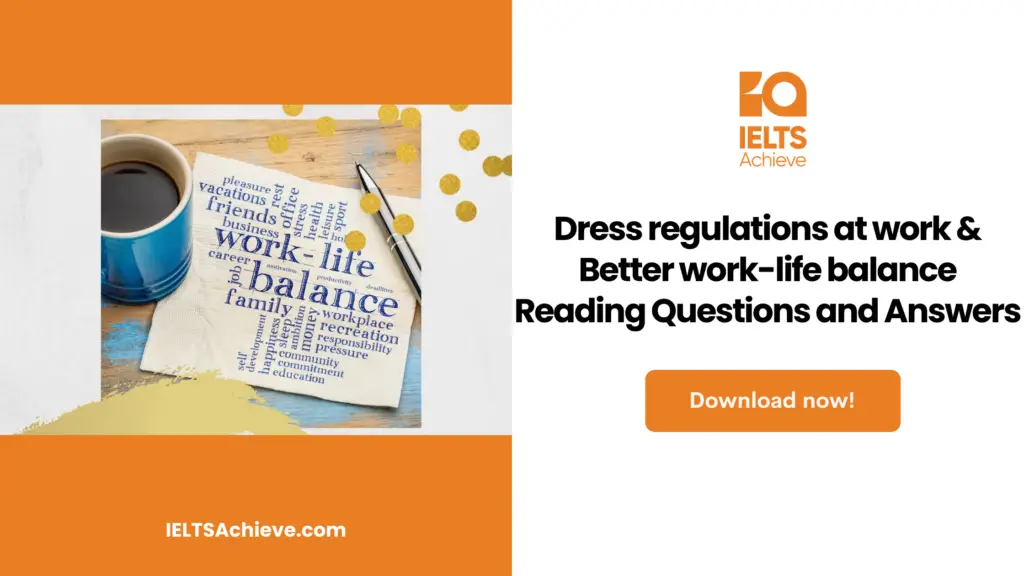The Blog post contains the following IELTS Reading Questions:
- IELTS Reading True/false/not given
- IELTS Reading Matching Headings
- IELTS Reading Sentence Completion
Stay informed and prepared for success – Explore our comprehensive Reading Test Info page to get valuable insights, exam format details, and expert tips for mastering the IELTS Reading section.
The Spice of Life – Passage

The spice of life
Paragraph A
“Chicken Tikka Masala” is widely regarded as the most famous dish in the United Kingdom. However, it does not immediately come to mind. But, it is surely the answer and it is quite frequently referred to as a British national dish”. The dish is said to have been invented by Indians while they were relocating to Scotland, where they initially roasted chicken chunks (tikka) by mixing them with spices and yoghurt and serving it in a bowl of Masala sauce. The exact amount of each spice used to make Chicken Tikka Masala varies from restaurant to restaurant. Purced, tomatoes, and cream for smooth texture are common ingredients used by all restaurants, and the orange colour is provided by the addition of turmeric and paprika. What about British cuisine? Spices have certainly come a long way.
Paragraph B
Spices are essentially roasted seeds, roots, fruits, bark, or vegetable parts of flora. Because they are added in small amounts, their primary function is to enhance the taste or colour. Herbs, which are obtained from leaves, are also used to flavour foods. Furthermore, mustard and black pepper are derived from seeds, cinnamon from bark, cloves from dried buds of flowers, ginger and turmeric from roots, and mace and saffron from seed covers and stigma tips, respectively.
Pre-made spice combinations were popular among the various spice varieties. Chilli powder is made up of spices like cumin, oregano, garlic powder, and salt, as well as chili peppers. The mixed spice, which is frequently used in baking, is nothing more than a British blend of sweet spices with cinnamon as the dominant flavour. The ever popular masala, as noted, could be anything, depending on the chef.
Two vertical sets of interconnected hydraulic cylinders and pistons were composed in an operating mechanism. The pistons were placed into the bed of the river and both the pistons were supported by the boat – carrying a tank 22.86 length and 4.72 metres breadth. At rest, one tank was levelled with a canal and the other with a river. In order to move the tanks, a small amount of water was removed from the bottom tank. As a result of which the bottom tank used to become lighter than the top tank.
The heavier top tank moved down as the two hydraulic cylinders were attached and forced hydraulic liquid through the connecting pipe into the outer cylinder pushing that piston and lighter tank upwards. While the tanks are moving the major function of the waterlight is to gate both on the tanks and at the entrance to the canal containing the water. The small amount of energy is not only required to effect a reasonably rapid movement by a hydraulic pump driven by steam supplied but is also used to enable the tanks to be precisely levelled at the end of their journey.
Paragraph C
However, the thread and commerce of the spices were carried out in 2000 BC in and around the Middle Last. Its use by human communities was carried out 10,000 years ago. In these early times the spices were more used for the purpose of religion, medicine, food preservation and embalming rather than cooking. Although extensive overland trade routes such as the Silk Road were eventually established, it was maritime advances into India and East Asia that resulted in the most dramatic increase in commercial activity. Since then, spices have been the driving force of the global economy, commanding such high prices that they pitted nation against nation and served as a major impetus for exploration and conquest. It is difficult to overestimate the role spices have played in human history.
Paragraph D
After observing spice-laden ships from the Orient sailing across the Indian Ocean to Red Sea and Persian Gulf ports, from which camel caravans transported goods overland, Muslim traders initially took control of these routes. Despite the fact that European countries were still in the early stages of development, they started to dominate the Far East through aggressive colonisation and exploration tactics, which gave them control over the spice trade. The British and Dutch eventually took control, and by the nineteenth century, the British had control of India while the Dutch had a larger portion of the East Indies. Initially, Portugal held the dominant position (Indonesia). At the time, pepper, nutmeg, and cloves were among the most expensive spices.
Paragraph E
But why were certain species in constant demand? There are numerous alternatives. They were initially thought to have vital medicinal properties by balancing “humours,” or more of emotions in the blood. Later, it was thought that they were used to prevent diseases such as plague, which caused the prices of recommended spices to skyrocket. Spices, on the other hand, were quite obvious in flavouring the bland meat-based European cuisines.
It can be said that historically, pepper had the highest demand, and even today, peppercorns are the most widely traded spice in the world in terms of monetary value (dried black pepper kernels). However, it cannot be denied that saffron is not only the most expensive spice in the entire country due to its extraction from the saffron flower, but it is also valued for its vivid colour.
Paragraph F
India is the production house for the majority of world’s spices according to the assumptions. Certain spices, on the other hand, are produced in a variety of countries. Vietnam produces and exports one-third of the world’s demand for pepper. Furthermore, Indonesia produces the most nutmeg, while Iran produces the most saffron and Sri Lanka produces the most cinnamon.
It is difficult to export such spices. The first and most important reason is that they are either dried as a whole product or dried and ground into powder, both of which allow for bulk purchases, easier storage and shipping, and a longer shelf life. Rhizomes are underground stems of turmeric that are boiled for a couple of hours before being dried in ovens and ground into a yellow powder that can be found in South Africa and Middle Eastern cuisines, for instance.
Paragraph G
There are numerous disadvantages to grinding spices. They not only increase surface area but also speed up evaporation and carry out the oxidation process for flavour and aromatic compounds. Whole dried spices, on the other hand, keep these for much longer. As a result, seed-based varieties are frequently purchased in this format. Because this allows grinding to be done at the time of cooking or eating, the flavour and effect are maximised, resulting in pepper “grinders” rather than “shakers” gracing the tables of the world’s best restaurants.
Unlock your full potential in the IELTS Reading section – Visit our IELTS Reading Practice Question Answer page now!
Recommended Questions:
Renewable Energy IELTS Reading Question with Answer
Questions
Questions 1- 4
Do the following statements agree with the information given in Reading Passage One? Write:
- TRUE if the statement agrees with the information
- FALSE if the statement contradicts the information
- NOT GIVEN if there is no information on this
1. The ingredients in masala are largely standardised.
2. More investigation was prompted by the rise in spice demand.
3. Pepper is a popular food in Vietnam.
4. Spices made from seeds are simple to store.
Enhance your skills in identifying information as True, False, or Not Given. Click here to discover expert strategies and techniques for mastering this question type in the IELTS Reading section.
Questions 5-10
Reading Passage One has seven paragraphs, A-G
Choose the correct heading for paragraphs B-G from the list of headings.
List Of Headings
i) Uses of spice
ii) Spices for Cooking
iii) Changing Leader
iv) A strange choice
v) Conserving flavours
vi) Famous spice routes
vii) The power of spice
Viii) Some spices
ix) Medicinal species
x) Spice providers
Write the correct number, i-x, for each answer.
Example: Paragraph A – iv
5. Paragraph B
6. Paragraph C
7. Paragraph D
8. Paragraph E
9. Paragraph F
10. Paragraph G
Ready to conquer Matching Headings questions? Click here to learn essential tips and techniques for matching headings accurately to paragraphs or sections in the IELTS Reading section.
Questions 11-13
Complete the sentence.
Choose NO MORE THAN TWO WORDS from the passage for each answer.
Saffron, from the small 11._______ of flowers, has a 12.______ , and is mostly grown in 13.______.
Enhance your sentence completion skills in the IELTS Reading section. Click here to access our comprehensive guide and learn effective strategies for filling in missing words or phrases in sentences.
Unlock your full potential in the IELTS Reading section – Visit our IELTS Reading Practice Question Answer page now!
Recommended Questions:
Renewable Energy IELTS Reading Question with Answer
Answers for The Spice of Life
1. Answer: False
2. Answer: True
3. Answer: Not given
4. Answer: True
5. Answer: Viii
6. Answer: Vii
7. Answer: iii
8. Answer: i
9. Answer: x
10. Answer: v
11. Answer: Stigma tips
12. Answer: Vivid colour
13. Answer: Iran

We hope you found this post useful in helping you to study for the IELTS Test. If you have any questions please let us know in the comments below or on the Facebook page.
The best way to keep up to date with posts like this is to like us on Facebook, then follow us on Instagram and Pinterest. If you need help preparing for the IELTS Test, join the IELTS Achieve Academy and see how we can assist you to achieve your desired band score. We offer an essay correction service, mock exams and online courses.

